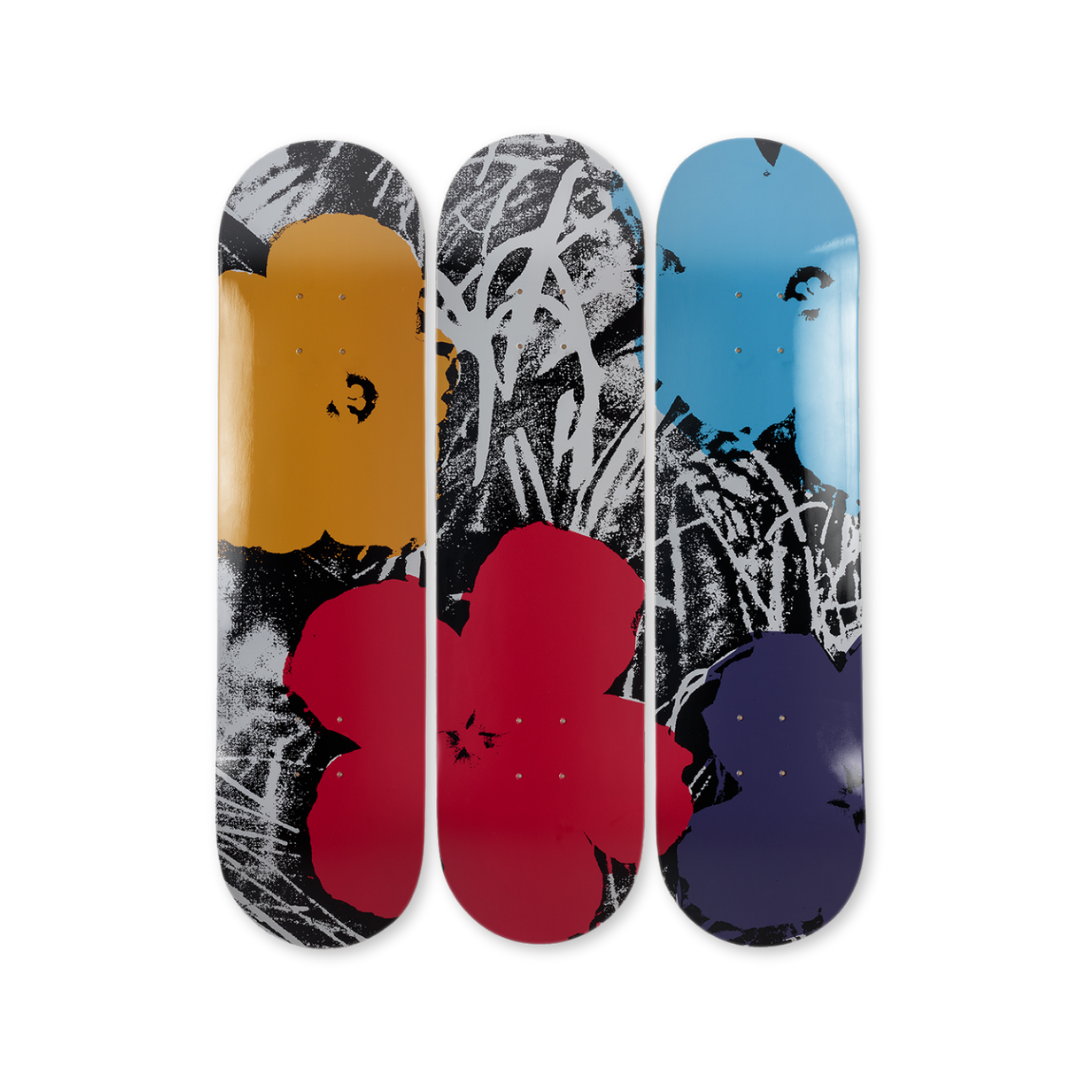Flowers - Grey/Red
Limited Edition of 500
The Flower series is one of Andy Warhol's most successful projects. A departure from his usual representation of brands, the series is based on a photograph of hibiscus blossoms that he found in a magazine titled Modern Photography. According to art critic David Bourdon, Warhol's vibrant manipulation of colors produces a floating effect in his flowers, "like cut-out gouaches by Matisse set adrift on Monet's lily pond." It is also said that the Flower series gave rise to the expression "flower power", against the backdrop of the massive non-violence movement during the 1960's.



About the Artist

Before assuming his place in history, Andy Warhol (1928-1987) as a commercial illustrator in New York for over a decade. Although he began painting in the late 1950s, he emerged into the spotlight in 1962 when he exhibited wooden replicas of Brillo soap pad boxes, along with paintings of Coca-Cola bottles, and his infamous Campbell’s soup cans. Warhol’s mass-producing silkscreen technique was key in reducing his depictions into insipid and dehumanized cultural icons that reflected the alleged emptiness of American material culture, along with Warhol’s own emotional withdrawal towards his creations. Eventually, Warhol’s work propelled him to the forefront of the emerging Pop art movement in America.
Before assuming his place in history, Andy Warhol (1928-1987) as a commercial illustrator in New York for over a decade. Although he began painting in the late 1950s, he emerged into the spotlight in 1962 when he exhibited wooden replicas of Brillo soap pad boxes, along with paintings of Coca-Cola bottles, and his infamous Campbell’s soup cans. Warhol’s mass-producing silkscreen technique was key in reducing his depictions into insipid and dehumanized cultural icons that reflected the alleged emptiness of American material culture, along with Warhol’s own emotional withdrawal towards his creations. Eventually, Warhol’s work propelled him to the forefront of the emerging Pop art movement in America.